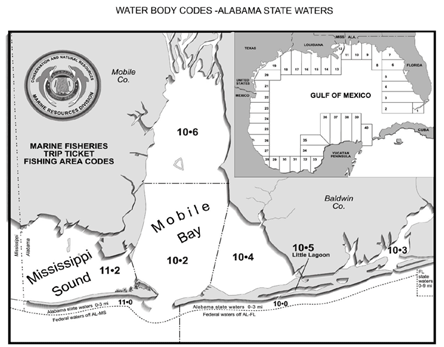- Infectious Diseases & Outbreaks Home
- DETECT Notifiable Diseases
- TEST
- REPORT
- Case Counts
- Outbreaks
- Foodborne Diseases
- Respiratory Illnesses
- Avian Flu
- Rabies
- Waterborne Diseases
- Zoonoses
- Infection Prevention
- Coastal Conditions
- District Investigators
- Serious Infectious Disease Network (SIDN)
- Contact Us
SEE ALSO:
Communicable Diseases
Healthcare-Associated Infections (HAI)
Legionella
Mpox
Mosquito-Borne Diseases
One Health
Tick-borne Diseases
Toxicology
Viral Hemorrhagic Fevers
NEED HELP?
Having trouble finding what you are looking for? Use our A to Z Index.
Seafood Testing Results
The Deepwater Horizon accident has raised concerns as to the safety of Alabama seafood. To ensure the safety of our seafood, the Alabama Departments of Agriculture and Industry (ADAI), Conservation and Natural Resources (Marine Resources Division) (ADCNR/MRD), and ADPH, Bureau of Clinical Laboratories (BCL) and Epidemiology Toxicology Branch, have instituted a three-year seafood testing program in cooperation with British Petroleum (BP). Seafood samples (crabs, finfish, oysters, and shrimp) were collected from open water and seafood processors, and tested for polycyclic aromatic hydrocarbons (PAHs) found in crude oil, and dioctyl sodium sulfosuccinate (DOSS) found in dispersants.
Table 1. Current Alabama Seafood Sampling Results
Collected July through September 2014 and tested 1/8/2015
Seafood Group |
Total Tested |
Number without Detections |
Number with Detections |
Number Exceeding LOC1 |
Range of Findings (ppm) |
|
Crab |
20 |
8* |
12 |
0 |
< LOD-0.037< P> |
|
Finfish |
92 |
3* |
89 |
0 |
< LOD-0.079 |
|
Oysters |
9 |
7* |
2 |
0 |
< LOD- TR2 |
|
Shrimp |
16 |
1* |
15 |
0 |
< LOD-0.095 |
Table 2. Cumulative Monthly Alabama Seafood Sampling Results
Collected and tested 10/27/2011- 1/8/2015
Seafood Group |
Total Tested |
Number without Detections |
Number with Detections |
Number Exceeding LOC1 |
Range of Findings (ppm) |
|
Crab |
217 |
79* |
138 |
0 |
TR2-0.283 |
|
Finfish |
1101 |
219* |
882 |
0 |
TR2-0.349 |
|
Oysters |
100 |
36* |
64 |
0 |
TR2-0.175 |
|
Shrimp |
698 |
489* |
209 |
0 |
TR 2-0.170 |
* Results were below Limit of Detection (LOD)
1 FDA's Levels of Concern (LOC)
2 Trace (TR) any finding above LOD and below Limit of Quantification (LOQ)
Monthly Summaries*
*For historical data, please call Epidemiology at 800-338-8374 and ask for Dr. John Guarisco, Environmental Toxicologist.
Water Body Codes
Page last updated: May 13, 2021
SEE ALSO:
Communicable Diseases
Healthcare-Associated Infections (HAI)
Legionella
Mpox
Mosquito-Borne Diseases
One Health
Tick-borne Diseases
Toxicology
Viral Hemorrhagic Fevers
NEED HELP?
Having trouble finding what you are looking for? Use our A to Z Index.





